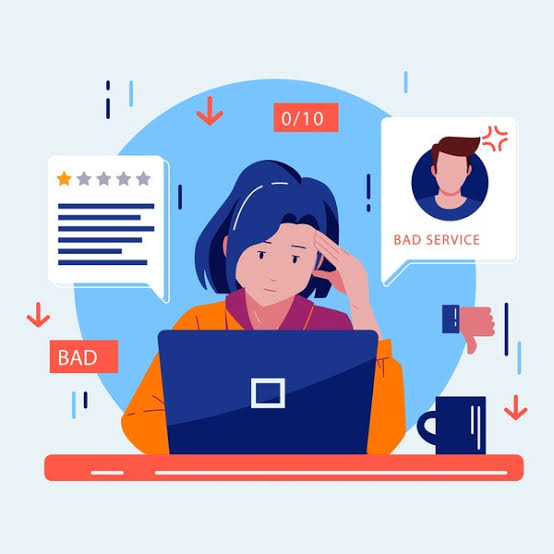
Clap Back with Class: Handling Negative Feedback Like a Pro
No business is immune to negative feedback, but how you handle it defines your success. Whether it’s a harsh review, an upset customer, or social media backlash, your response can either damage your brand or boost customer trust.
In this blog, we’ll guide you on managing negative feedback professionally—turning criticism into an opportunity for growth. Learn expert strategies to maintain your brand reputation, build trust, and respond with tact. Discover how to stay professional, craft the perfect response, and even leverage criticism to enhance your business.
With these actionable tips, you’ll transform negative feedback from a business nightmare into a stepping stone toward success. Keep reading to master the art of damage control while maintaining your brand’s integrity and credibility. If you want to build a resilient brand, this guide is your go-to resource. Let’s dive in!
Table of Contents
- Why Negative Feedback is a Game-changer for Your Business
- How to Stay Calm and Professional when facing Negative Feedback
- Crafting the Perfect Response to a Negative Feedback
- Turning Negative Feedback into an Opportunity
- Preventing Future Complaints
- Final Thoughts: Mastering Negative Feedback
Why Negative Feedback is a Game-changer for Your Business
No business, big or small, is exempt from negative feedback. Whether it’s an unhappy customer review, social media criticism, or a complaint via email, it’s bound to happen. But here’s the kicker—how you handle it matters more than the feedback itself.
Ignoring or mishandling negative feedback can damage your reputation, reduce customer trust, and even impact sales. On the other hand, a well-managed response can turn an unhappy customer into a loyal advocate. Your ability to handle criticism professionally can set you apart from competitors.
Key takeaway: Never ignore negative feedback—it’s an opportunity to improve and connect with customers.
How to Stay Calm and Professional when facing Negative Feedback
When you first encounter negative feedback, it’s natural to feel defensive. But before you respond, take a deep breath. Reacting emotionally can escalate the situation rather than resolve it.
Tips to Maintain Professionalism:
- Pause Before Responding – Take a moment to analyze the complaint and avoid knee-jerk reactions.
- Separate Emotion from Business – View feedback objectively and focus on facts.
- Acknowledge the Issue – Show empathy and let the customer know they are heard.
By staying professional, you demonstrate that your brand values customer concerns.
Crafting the Perfect Response to a Negative Feedback
Your response to negative feedback can either resolve the issue or make it worse. Here’s how to respond effectively:
1. Acknowledge and Apologize
Start with a polite acknowledgment. A simple “We appreciate your feedback” can go a long way. If applicable, offer a sincere apology.
2. Address the Concern
Be specific about the issue raised. Provide a brief explanation or reassurance about how you’ll address it.
3. Offer a Solution
Show initiative by providing a resolution—whether it’s a refund, replacement, or future improvement.
4. Take It Offline (If Necessary)
If the issue requires further discussion, politely invite the customer to continue the conversation via email or phone.
Example Response:
“Hi [Customer’s Name], we sincerely appreciate your feedback. We’re sorry for the inconvenience and would love to make things right. Please reach out to [contact details] so we can resolve this for you. Thank you for bringing this to our attention!”
A well-crafted response can turn dissatisfied customers into loyal supporters.
Turning Negative Feedback into an Opportunity
Believe it or not, negative feedback can be a blessing in disguise. Instead of fearing criticism, use it to refine your business.
How to Use Feedback to Grow:
- Identify Patterns – Repeated complaints indicate areas for improvement.
- Enhance Customer Experience – Address pain points to provide better service.
- Build Brand Trust – A thoughtful response shows customers that their opinions matter.
Smart brands don’t just survive negative feedback—they use it to thrive.
Preventing Future Complaints
While you can’t eliminate negative feedback entirely, you can reduce its frequency.
Proactive Strategies to Avoid Complaints:
- Improve Product/Service Quality – Ensure your offerings meet high standards.
- Enhance Customer Support – Provide quick, helpful, and empathetic responses.
- Encourage Positive Reviews – Happy customers often stay silent. Prompt them to leave feedback.
- Monitor Brand Mentions – Use social listening tools to catch potential issues early.
Preventing negative feedback is easier than dealing with it later.
Final Thoughts: Mastering Negative Feedback
Handling negative feedback professionally isn’t just damage control—it’s a strategic move that strengthens your brand. Every business faces criticism, but the best ones use it to grow.
Key Takeaways:
✔ Stay calm and respond professionally.
✔ Address complaints with empathy and provide solutions.
✔ Use feedback to refine your business.
✔ Proactively minimize future complaints.
Mastering negative feedback can transform challenges into opportunities, making your brand stronger and more trusted. So, the next time criticism comes your way, remember—it’s not the end of the world; it’s the start of improvement.
Now, It’s Your Turn!





